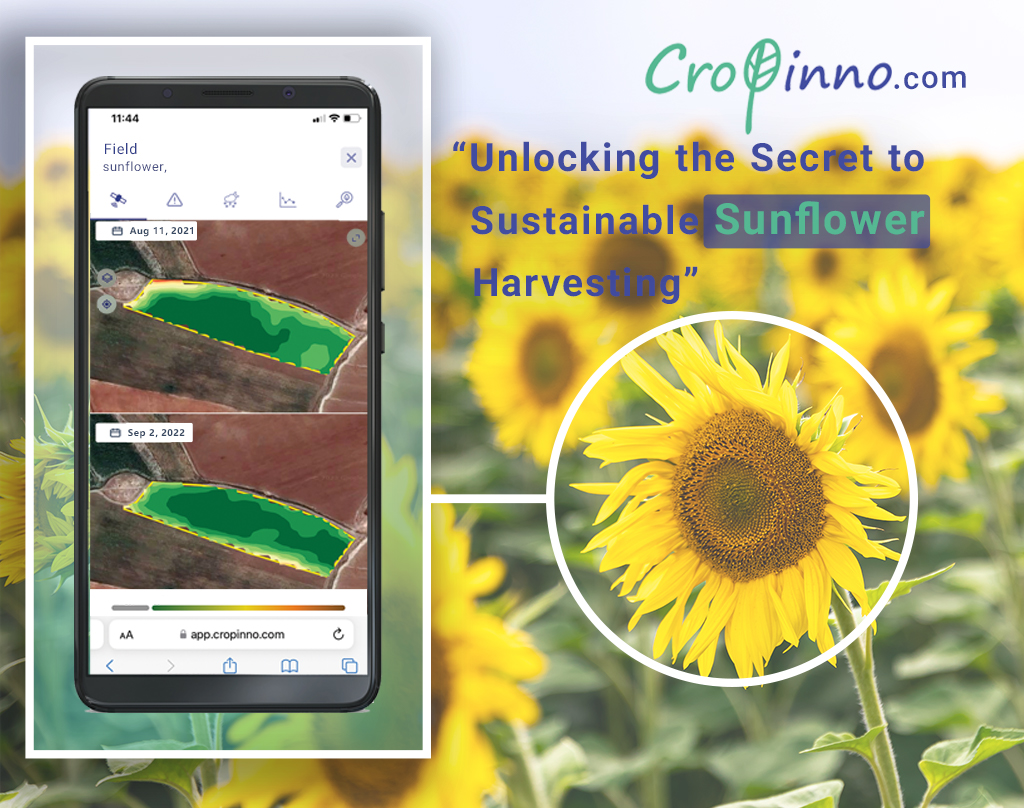In the pursuit of a thriving agricultural ecosystem, farmers must be mindful of the impact of consecutive planting on crop yield and soil fertility. Analyzing the satellite images of one of our farmers who grew sunflowers for two consecutive years, we noticed a significant decrease in the land’s performance. The key to overcoming this challenge lies in understanding the importance of crop rotation. This post explores the concept of crop rotation, its role in maintaining soil health, and its influence on sunflower harvesting. By adopting this sustainable practice, farmers can optimize their yields while preserving the long-term viability of their land.
Understanding the Importance of Crop Rotation:
Crop rotation is a fundamental agricultural practice that involves planting different crops in succession on the same piece of land. The main goal of crop rotation is to avoid the negative effects of “allelopathy“, where plant roots secrete biochemical compounds that can hinder plant growth or affect other plant species. Allelopathy’s impact on plant growth is amplified by environmental stresses, making crop rotation an increasingly essential strategy for modern farmers facing mounting challenges due to climate change.
Preserving Soil Fertility and Yield:
The benefits of crop rotation extend beyond allelopathy management. By rotating crops, farmers can maintain soil fertility and prevent nutrient depletion. Sunflowers, like all plants, have specific nutrient requirements, and growing them consecutively in the same soil can lead to a deficiency of essential nutrients, ultimately resulting in reduced plant health and productivity. By diversifying crops, farmers can replenish the soil with a wider range of nutrients, ensuring healthier plants and higher yields.
Mitigating Pest and Disease Pressure:
Continuously planting sunflowers in the same area can lead to the buildup of pests and diseases that specifically target these plants. Crop rotation disrupts the life cycles of these pests and reduces their populations, minimizing the need for pesticides and promoting natural pest control. By rotating crops, farmers can create an inhospitable environment for pests and diseases, safeguarding the health of their sunflower crops and reducing potential economic losses.
Enhancing Soil Structure and Water Management:
Consecutive planting of sunflowers can weaken the soil structure, making it susceptible to erosion. Crop rotation helps preserve soil integrity by varying the root systems of different crops, which improves soil aeration and water-holding capacity. This, in turn, reduces soil erosion, preventing valuable topsoil from being washed away during heavy rainfall and ensuring a more sustainable farming practice.
———————————————————————————————————————————————————————-
Conclusion:
Crop rotation stands as a powerful and time-tested method to ensure the long-term success of sunflower harvesting and sustainable agriculture as a whole. By diversifying crops and implementing this practice, farmers can optimize yields, preserve soil fertility, and effectively manage pests and diseases. Moreover, crop rotation contributes to healthier soil structure and water management, further enhancing the agricultural ecosystem’s resilience to environmental challenges. Embracing crop rotation not only benefits farmers’ bottom lines but also helps create a greener and more sustainable future for agriculture. Let us join hands in adopting these best practices, and together, we can cultivate a brighter and more fruitful tomorrow for our planet and its people.


2 Responses
I am sure this article has touched all the internet
visitors, its really really nice piece of writing
on building up new blog.
Brilliant article! You’ve got a new fan.